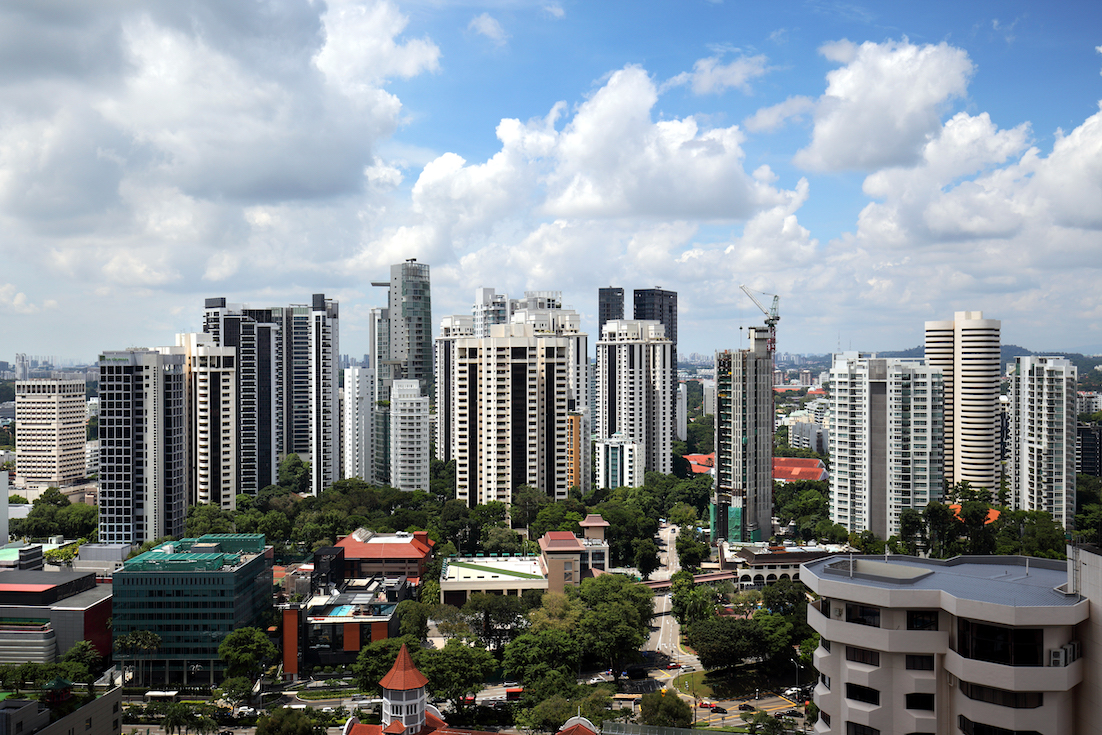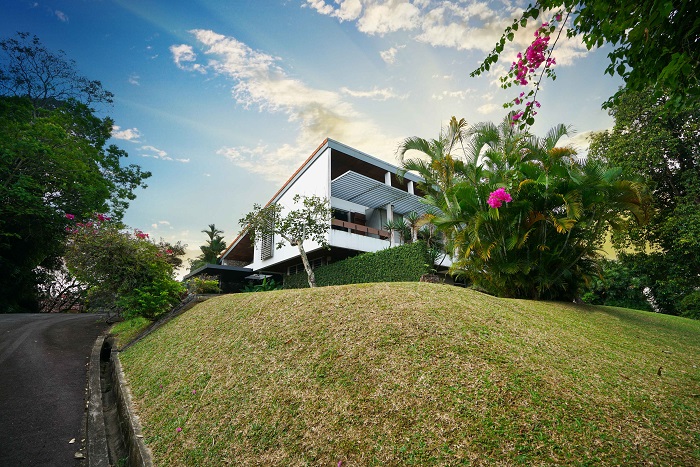Singapore Property Market 2019: 5 Things You Need To Know
By EdgeProp Singapore
/ EdgeProp |

Ask Buddy
Price trend for commercial property sales
Past Commercial rental transactions
Past Commercial sale transactions
Compare price trend of Commercial vs Industrial properties
Listings for commercial property
Price trend for commercial property sales
Past Commercial rental transactions
Past Commercial sale transactions
Compare price trend of Commercial vs Industrial properties
Listings for commercial property
With the New Year now upon us, many are wondering what lies ahead in the coming months.
In this article, we’ve rounded up 5 things you need to know about how the Singapore property market could pan out in 2019.

In the pipeline for launch in 2019 are about 60 new residential projects
In the pipeline for launch in 2019 are about 60 projects. Several developers have already lined up previews in January, ahead of Chinese New Year on February 5.
They include Roxy-Pacific Holdings’ Fyve Derbyshire and RV Altitude; TEE Land’s 35 Gilstead (the former Casa Contendere); One Meyer by Sustained Land; and Jervois Prive (former Jervois Green) by a consortium led by the owner of Spring Court restaurant. Meanwhile, bigger projects such as SingHaiyi’s The Gazania (former Sun Rosier) and The Lilium (former How Sun Park) are slated to launch after Chinese New Year.
Advertisement
The two biggest projects that will be rolled out in 1Q2019 are the former Normanton Park (1,882 units) and Treasure at Tampines (former Tampines Court), which will comprise over 2,000 units.
Location-wise, about 40% of projects headed for launch in 2019 are in prime Districts 9, 10 and 11. Many of these projects are freehold, and are located near the Orchard Road shopping belt and top international schools.

A semi-detached house at 25 Pasir Ris Way was sold for $5 million ($505 psf) in May (Credit: ET&Co)
Mortgagee sales are expected to rise in 2H2019, as more owners are choosing to list their properties on the auction market. Including re-listings, the number of properties put up for sale at auctions totalled 1,087 last year (as at Nov 30, 2018). This was 35.4% higher than the figure in 2017. According to Colliers International, the figure is the highest recorded since 2008.
From Colliers’ data, the total number of mortgagee listings in 2018 increased to 472, up 27% from 373 in 2017, while the number of owners’ listings increased to 615 in 2018, up 43% from 430 in 2017.
In the biggest transacted residential mortgagee sale for 2018, a semi-detached house at 25 Pasir Ris Way in the eastern corner of Singapore was sold for $5 million ($505 psf) in May. With a land area of 3,999 sq ft and a built-up area of 9,892 sq ft, the unit attracted 15 bids. The mortgagee sale was brokered by ET&Co.
The second-largest residential transaction was the sale of a duplex penthouse on the sixth- storey of The Berth by the Cove. The 2,938 sq ft, four-bedroom unit was sold for $3.25 million ($1,105 psf) at an auction conducted by ET&Co in February, and marked the first sale of a unit in Sentosa Cove at an auction this year. The previous owner had purchased it for $5.64 million ($1,919 psf) in 2011.
Advertisement

GCBs are restricted properties and coveted by foreigners. Some of the recent purchases were by newly minted Singapore citizens from China, Taiwan and India
For the 39 Good Class Bungalows (GCBs) sold by end-November 2018, the average land rate translates into $1,509 psf, or 13.6% higher than the average land rate of $1,329 psf for the 42 GCBs sold in 2017. This is because most of the GCBs sold in 2018 either occupied larger plots or were newly built, says Leong Boon Hoe, chief operating officer of List Sotheby’s International Realty Singapore (List SIR).
For instance, a newly built bungalow on a 15,091 sq ft site on Jervois Hill in the Chatsworth Park GCB area commanded a sale price of $41.2 million, or $2,729 psf — an all-time high psf price achieved for a GCB transacted.
SIR’s Leong attributes the strength of the GCB market to the profile of the owners and buyers: ultra-high-net-worth (UHNW) individuals with strong financial backing who are also long-term property investors.
GCBs are restricted properties and coveted by foreigners. Some of the recent purchases were by newly minted Singapore citizens from China, Taiwan and India, as well as selected permanent residents who have obtained approval to purchase from the Land Dealings Approval Unit of the Singapore Land Authority. The typical profile of GCB buyers tends to be UHNW families involved in the real estate, fashion, F&B, engineering and construction businesses, says SIR’s Leong.

The property cooling measures in July 2018 have influenced the super-rich to switch from luxury homes to an alternative asset class: conservation shophouses
With prices having risen, the profile has widened to include local and overseas high-net-worth investors, family offices and boutique real estate funds.
The property cooling measures in July 2018 have influenced the super-rich to switch from luxury homes to an alternative asset class: conservation shophouses, which are in limited supply, especially those zoned for commercial use in the prime districts.
Advertisement
In the past, shophouse buyers were a mix of investors and owner-occupiers. But with prices having risen, the buyer profile has widened to include local and overseas high-net-worth investors, family offices and boutique real estate funds. They perceive conservation shophouses as good long-term investments.
These buyers tend to zoom in on shophouses in prime Districts 1 and 2, particularly those in the CBD, Tanjong Pagar and Chinatown conservation areas, as a majority of the units are zoned for commercial use. That explains the record prices achieved for shophouses in these areas
“After the cooling measures were imposed, we started getting more enquiries from people wanting to buy shophouses,” says Clemence Lee, JLL senior director of capital markets. Lee, who specialises in shophouses adds that investors started to shift their focus towards commercial properties due to the higher stamp duties levied on residential property.
Sales for shophouses in the 11 months from January to November 2018 have already hit $1.371 billion, based on URA data as at Nov 16. This is close to the peak in 2012, when $1.385 billion worth of shophouse deals were concluded.

Grade-A office rents in the CBD have been rising at 2% to 3% a quarter over the last 12 months
The office sector was the one bright spot in the real estate market in 2018. Average gross monthly rents for Grade-A office space in the CBD rose 10.8% in 2018, according to preliminary estimates by JLL Research — from $9.17 psf in 4Q2017 to $10.16 psf in 4Q2018.
It surpassed the 7.6% rental growth in 2017. As a whole, Grade-A office rents in the CBD have recovered by 20.8% from the recent bottom of $8.41 psf in 1Q2017, says JLL.
“The outlook is positive,” says Chris Archibold, JLL head of leasing. “Grade-A office rents in the CBD have been rising at 2% to 3% a quarter over the last 12 months. It will continue to trend upwards because of the undersupply in the market over the next few years.”
The dearth of new Grade-A supply in the CBD in 2019, coupled with the withdrawal of Chevron House for refurbishment, will further tighten supply, putting increased upward pressure on rents, according to JLL Research. However, the availability of new supply outside the CBD should help relieve some pressure and cap CBD Grade-A rental growth.
Capital values for Grade-A office space in the CBD rose 12.2% y-o-y in 2018: from $2,463 psf in 4Q2017 to $2,763 psf in 4Q2018. This is faster than the 10.6% increase in 2017. CBD Grade-A office space has therefore seen capital values recover 25.2% from the recent bottom of $2,206 psf in 1Q2017. JLL Research says, “Demand-and-supply fundamentals are supportive of continued steady growth in capital values in 2019.”
Ask Buddy
Price trend for commercial property sales
Past Commercial rental transactions
Past Commercial sale transactions
Compare price trend of Commercial vs Industrial properties
Listings for commercial property
Price trend for commercial property sales
Past Commercial rental transactions
Past Commercial sale transactions
Compare price trend of Commercial vs Industrial properties
Listings for commercial property
https://www.edgeprop.sg/property-news/singapore-property-market-2019-5-things-you-need-know


Follow Us
Follow our channels to receive property news updates 24/7 round the clock.
Subscribe to our newsletter
Advertisement
Advertisement
Advertisement
Top Articles
Search Articles